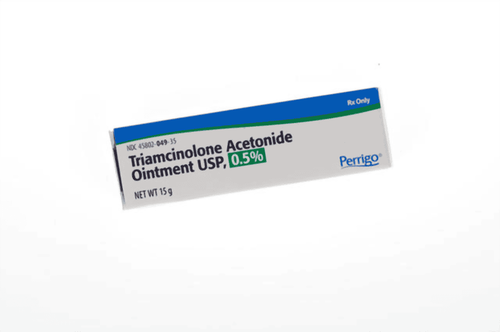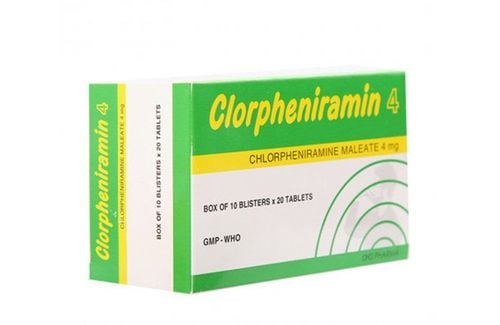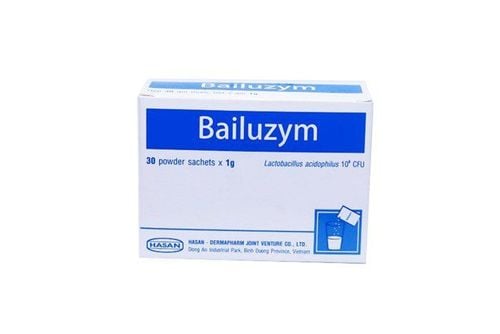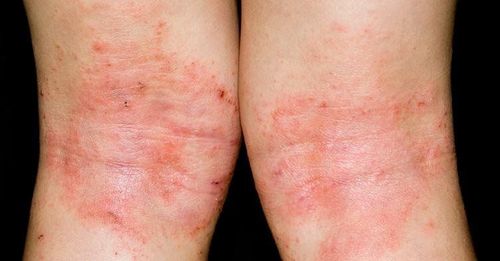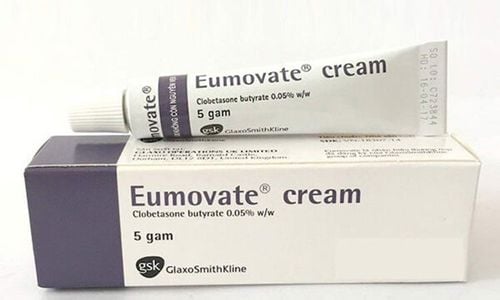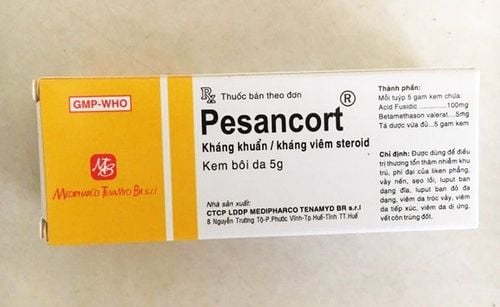This is an automatically translated article.
Baby's skin is delicate and immature until the child is 2 years old. That's why it's so important to take care of your baby's skin. This article will provide information on common skin conditions and how to care for them if your child has them.
1. Some common skin conditions in the first year of the baby
During the first year of life, children may experience some common skin conditions such as pain:
Baby acne is a red rash on the face. And milia are tiny white heads. Usually these types of acne will go away with time. Cutis marmorata: This is a pinkish-green marble-like skin condition caused by physiological dilation of capillaries and small blood vessels when exposed to cold temperatures, which disappear when warm again. This is not serious and will improve as your baby gets older. Toxic erythema of the newborn: This is a common type of erythema that can affect infants. Some have a hard yellow or white bump surrounded by a red border. Erythema tends to appear in different parts of the body. It most commonly appears on day 2, but may be present at birth or within the first 2 weeks. There is no specific treatment, it will gradually go away on its own. Mongolian birthmarks are flat birthmarks that are dark brown, stony gray, or blue-black. They sometimes look like bruises and are found on the lower back and bottom of a baby's skin. Mongolian birthmarks appear at birth, and most of them fade (at least partially) by age 2 and usually completely by age 5.

Dưỡng ẩm là 1 trong những bước chăm sóc da cho bé
2. Baby skin care method
2.1. Keep your baby out of the sun for long periods of time Short-term sun exposure when ultraviolet rays are low is safe and helps maintain vitamin D levels for children. However, when you take your baby outdoors, try to keep her skin out of the sun for long periods of time, even in winter.
According to the Food and Drug Administration (FDA) and the American Academy of Pediatrics (AAP), you should not put sunscreen on babies under 6 months old, older children can use sunscreen with SPF is at least 15. In addition, they make the following recommendations:
Limit sun exposure between 10 am and 4 pm, this is the time of ultraviolet rays. (UV) strongest; Keep the child in the shade for as long as possible; When outdoors, children should wear hats that cover their necks and wear loose, light clothes that cover their hands and feet; It's also important to keep your baby hydrated with breast milk or formula if he's been outside for long periods of time. 2.2. It is normal for babies to have small patches of dry skin in the first few weeks after birth. These dry patches will disappear on their own without the use of any additional moisturizer.
If your child has very dry or cracked skin, you can use products that contain mineral oil, free of fragrances and colorants, because these are substances that can irritate your baby's skin more. .
Natural vegetable oils, such as olive oil, coconut oil can be used as moisturizers for babies. However, there is some research that suggests they can make children's dry skin or eczema worse.
2.3. Bathing your baby properly You should give your baby a bath often, but it's not necessary to bathe every day. Use a soft towel and warm water to wash your hands, face, genitals, and other body parts between baths.
Here are some basic tips on how to bathe your baby :
Use warm, not hot water. Bathing the child in a warm room; Take a short bath, from 5 to 10 minutes; Use only clean water to wash your child's eyes, ears, mouth and face. Do not use cotton swabs to clean the inside of your baby's nose and ears. Mucus or earwax will clear itself out over time; Wipe the girl's genitals from front to back, do not separate the vaginal lips; Keep your boy's penis clean by gently washing the area. The foreskin should not be pulled back. Usually, it doesn't fully shrink until a boy is 3 to 5 years old, or even until after puberty; You don't need to use soap, but if you do, use baby soap that's free of fragrances and colors. Wash off the soap to prevent irritation to the child; After bathing, gently pat baby dry completely before dressing or diapering.

Chăm sóc da cho bé khi bị rôm sảy rất quan trọng
2.4. Cradle cap Seborrheic dermatitis is a common skin condition in infants that typically develops between the ages of 3 weeks and 3 months. With seborrheic dermatitis, you'll notice yellowish-brown patches around your baby's scalp. It can also appear on the forehead, eyebrows, and around the baby's skin around the ears.
In most cases, seborrheic dermatitis will go away on its own without treatment. Before bathing, you can apply a small amount of a scale softener, such as mineral oil, to the sebaceous areas before washing your baby's hair. However, washing your baby's hair too often will also make the scalp dry.
If you don't see improvement after a few baths, you should talk to your doctor about other treatments.
2.5. Avoiding triggers of contact dermatitis Contact dermatitis means that something has caused an allergic reaction on a child's skin. It has many different manifestations, including red and swollen skin or dry, cracked, flaky skin.
Common irritants and allergens that cause contact dermatitis are soaps or detergents, lotions, dyes, perfumes, cosmetics, etc. If it is not possible to determine what caused the inflammation, skin, you should talk to your doctor.
Treatment usually includes home skin care measures, such as:
Dress your baby in loose clothing and avoid rough fabrics, such as wool; Use an unscented and colorant-free moisturizer; Bath with warm water for the child until the rash is gone; Avoid exposing your child to known allergens. 2.6. Caring for your child's nails Although a baby's nails are small and thin, long and sharp nails can still cause scratches on the face or body, so you should monitor the condition of your nails. of children.
Children's nails grow quickly, so you need to regularly trim your child's nails. Use a non-metallic file to gently smooth and shorten your nails, or use baby nail clippers. Trim or file nails while the child is sleeping to avoid sudden movements that could cause injury.
2.7. Prevent heat rash Heat rash occurs if a child feels too hot, often in skin folds or areas where clothing rubs. Heat rash is tiny red bumps on the skin, most noticeable in light-skinned babies.
Heat rash occurs when sweat glands become blocked, especially in hot and humid weather, but can happen in winter if your baby wears too many layers of clothing.
To care for your baby's skin when it comes to heat rash, you should keep the skin cool, clean and avoid using oil-containing products. Dress your child in loose, airy cotton clothes.
You should contact your doctor if the rash does not improve within 3 days, the skin shows signs of infection, or the child has a fever.
2.8. You need to keep the umbilical cord area as clean and dry as possible until the cord falls off on its own after about 1 to 3 weeks. It is important that you do not pull the umbilical cord to fall off.
You should call your doctor if you notice pus, redness or swelling, your baby has a fever, has a foul-smelling discharge from the navel...
Use water and cotton balls to keep the baby's navel area clean and dry. dry. Do not use disinfectants or alcohol wipes as they slow down the umbilical cord shedding.

Hăm tã gây kích ứng cho da em bé
2.9. Diaper rash in babies Diaper rash occurs when urine or stool in a diaper comes in contact with and irritates a baby's skin.
Candidiasis diaper rash usually appears around the genitals and buttocks. It is usually very red with small dots along with large patches. Candida is a type of yeast that causes infections on the skin or mouth. If you suspect your child has a Candida infection, contact your doctor to treat it with a prescription antifungal cream.
What parents can do to prevent diaper rash:
Change diapers frequently; Do not wear diapers for short periods of time to allow the skin to dry. This will help prevent and treat mild cases of diaper rash; When changing your baby's diaper, wash with mild soap and warm water, let dry completely; Apply unscented mineral oil wax or cream with zinc oxide to the diaper area; Avoid using baby powder or talcum powder. 2.10. Eczema Eczema is a rash that manifests as dry, thickened, scaly skin or tiny red bumps that blister, drain, or become infected if scratched.
Eczema usually appears on a baby's forehead, cheeks or scalp, although it can spread to the hands, feet, chest or other parts of the body. Often eczema occurs in infants with allergies or a family history of allergies or eczema.
Although there is no cure for eczema, it can usually be controlled and cleared up in a few months or years if:
Avoid frequent bathing; Keep your baby's skin from drying out and itching by adding hypoallergenic oils to the bath water; Use a gentle, unscented moisturizer on your baby's skin to reduce dryness, especially after bathing when the baby's skin is still damp; Dress your baby in loose cotton fabrics; If the rash persists and your baby is not comfortable, you can see your doctor for a prescription.
Skin is the largest organ on the body, so it is important to take care of it properly. Remember to keep your baby's skin clean and dry, and don't overuse moisturizers or other skin products. If the rash is accompanied by fever, infection, or does not go away within a few days, you should contact your doctor for more information.
Please dial HOTLINE for more information or register for an appointment HERE. Download MyVinmec app to make appointments faster and to manage your bookings easily.




